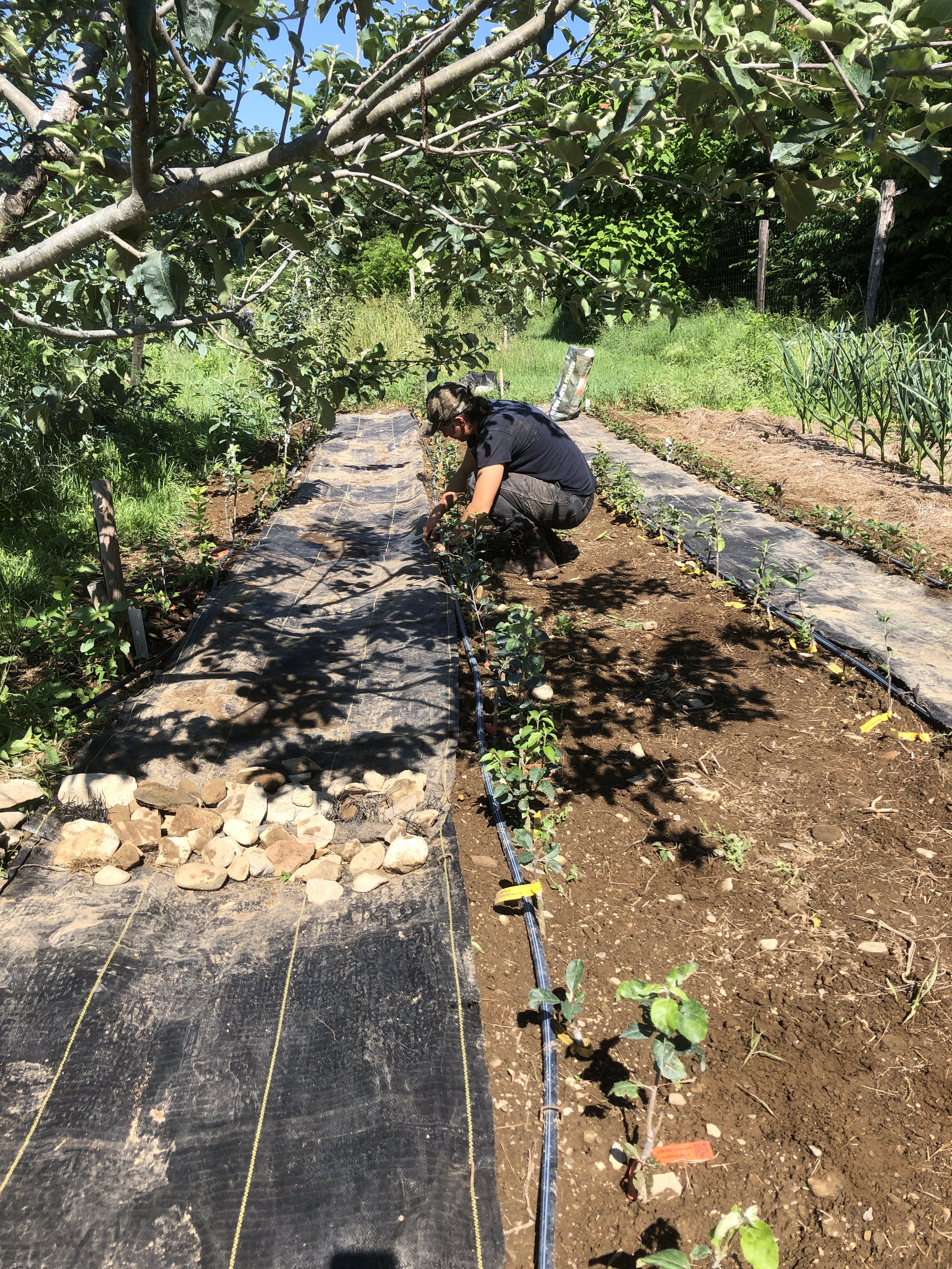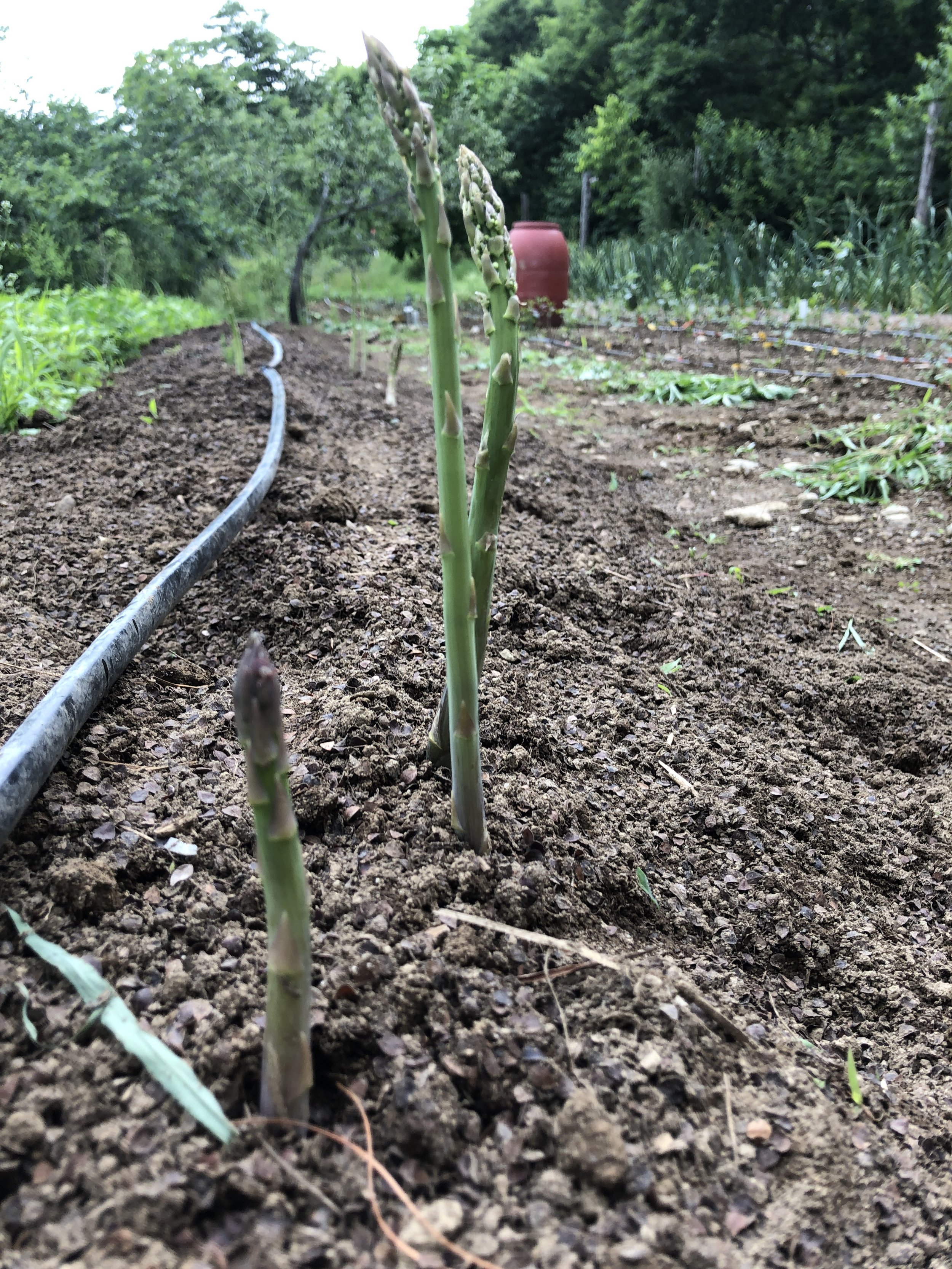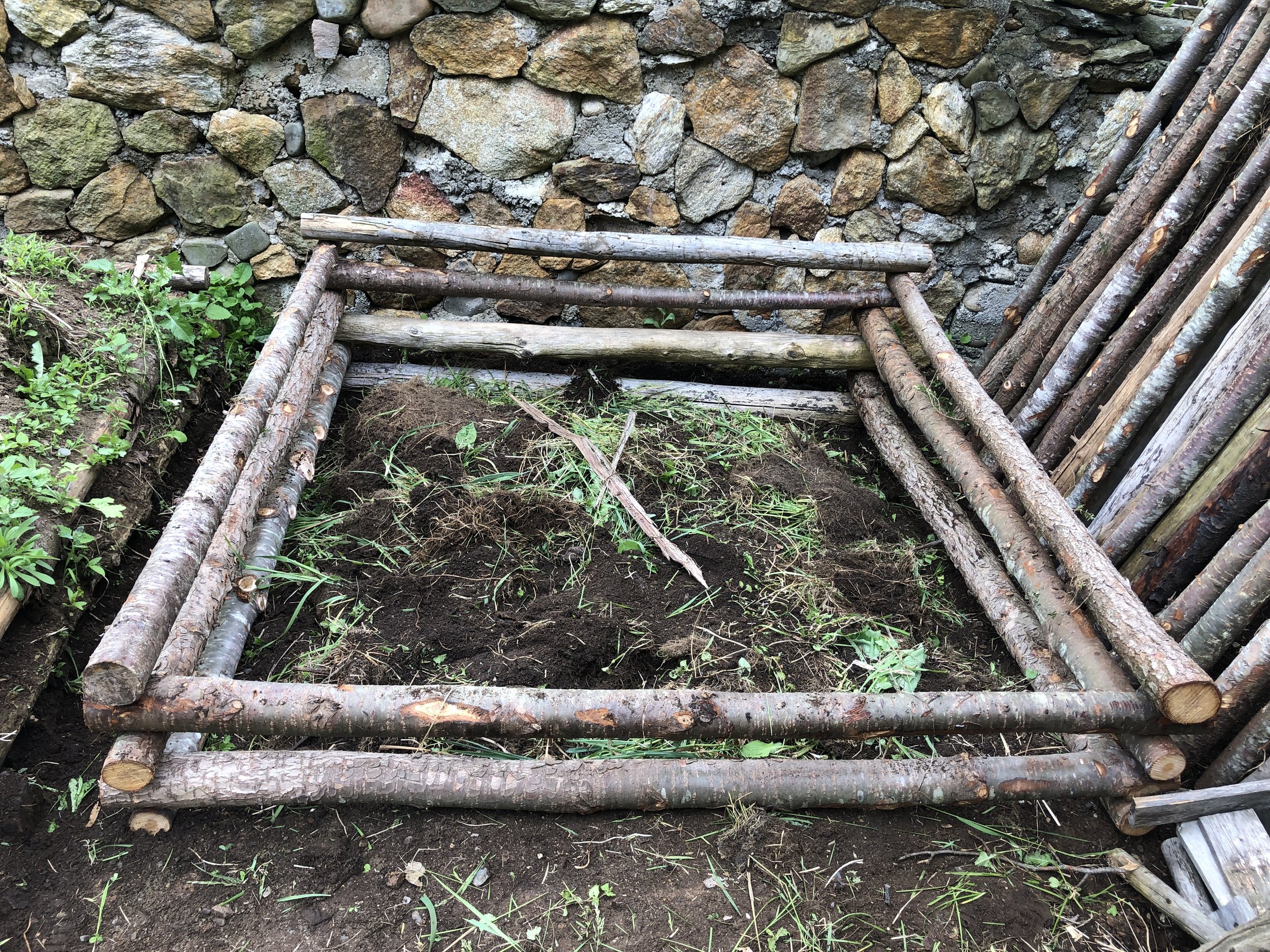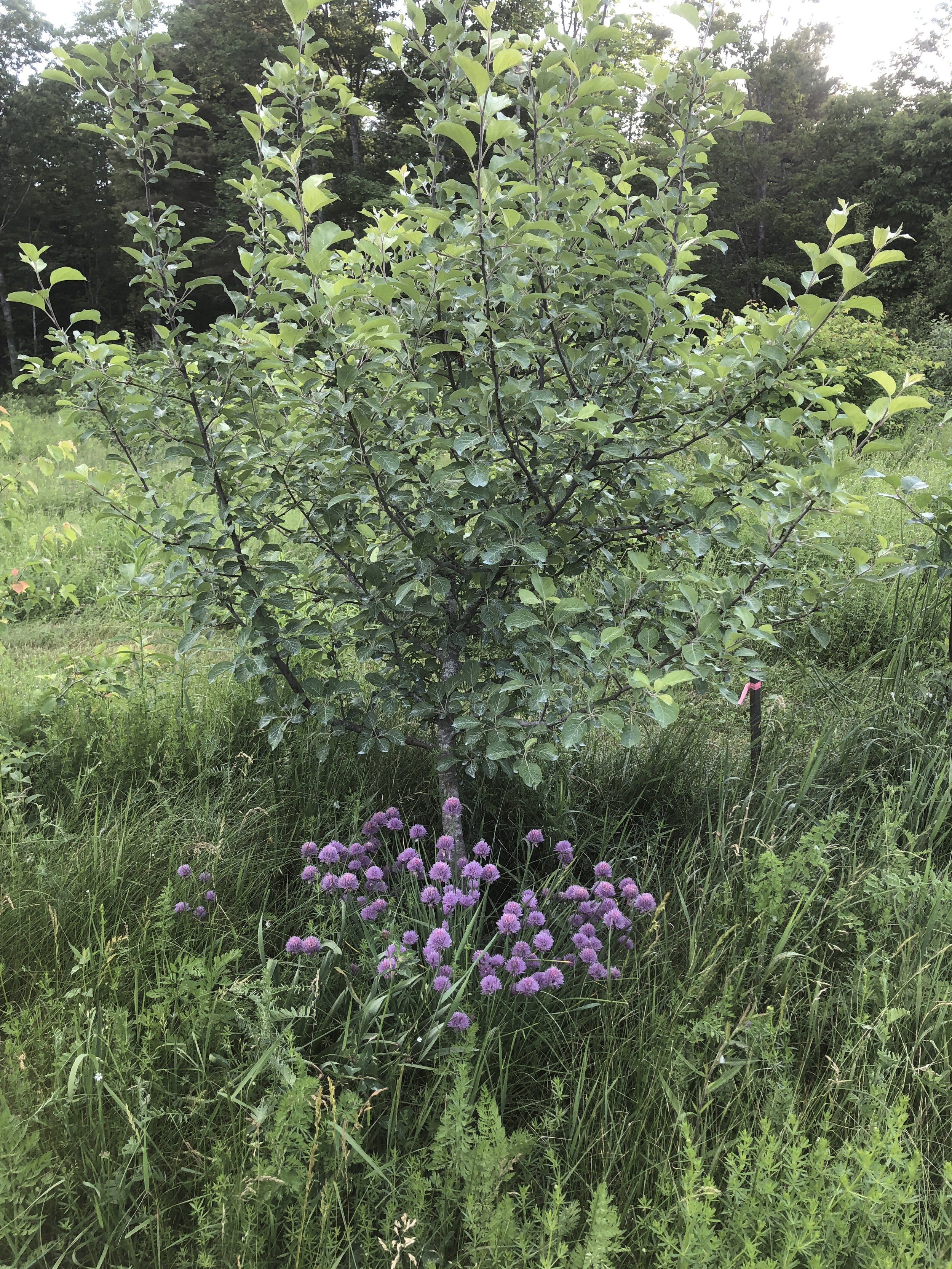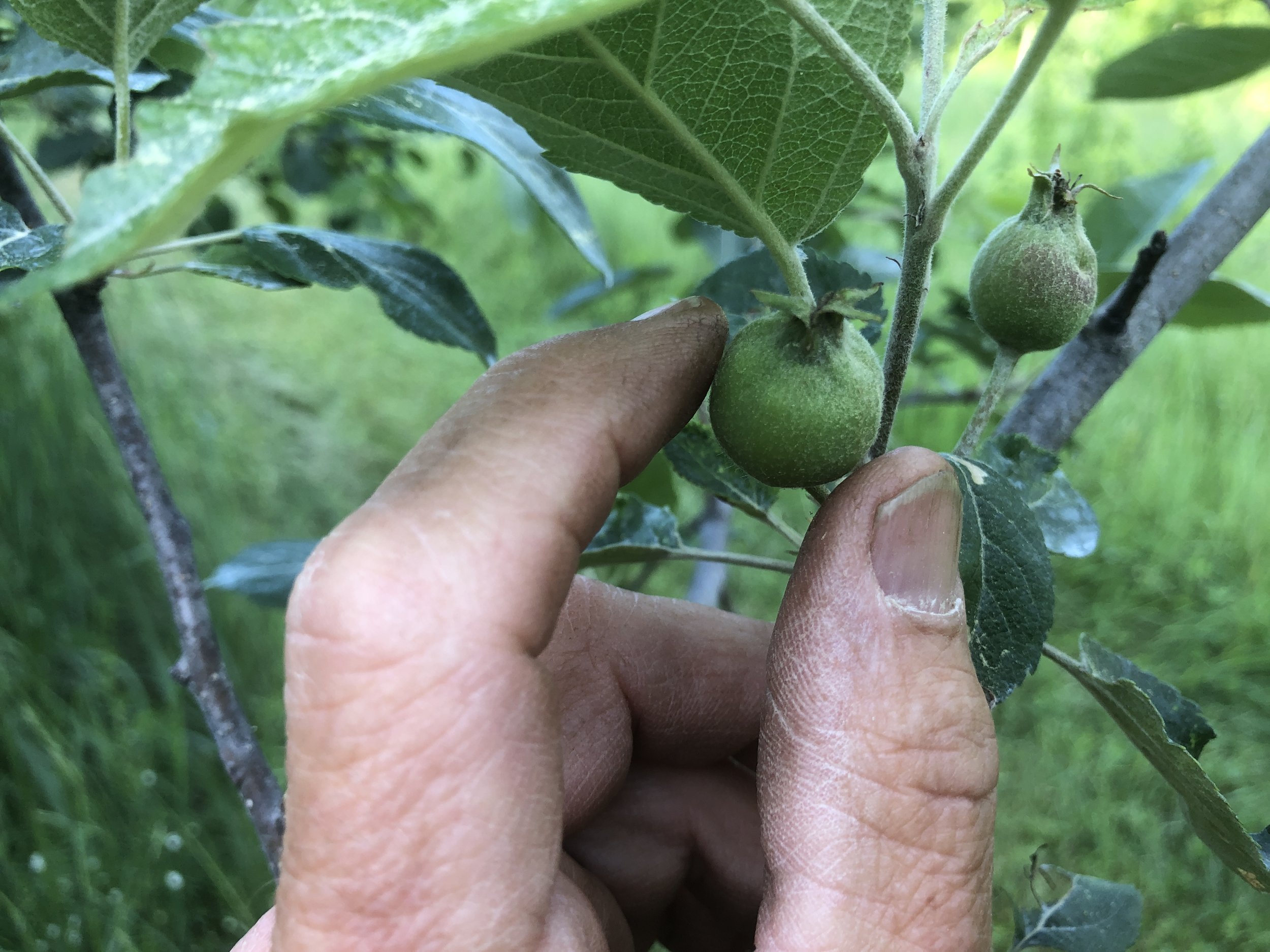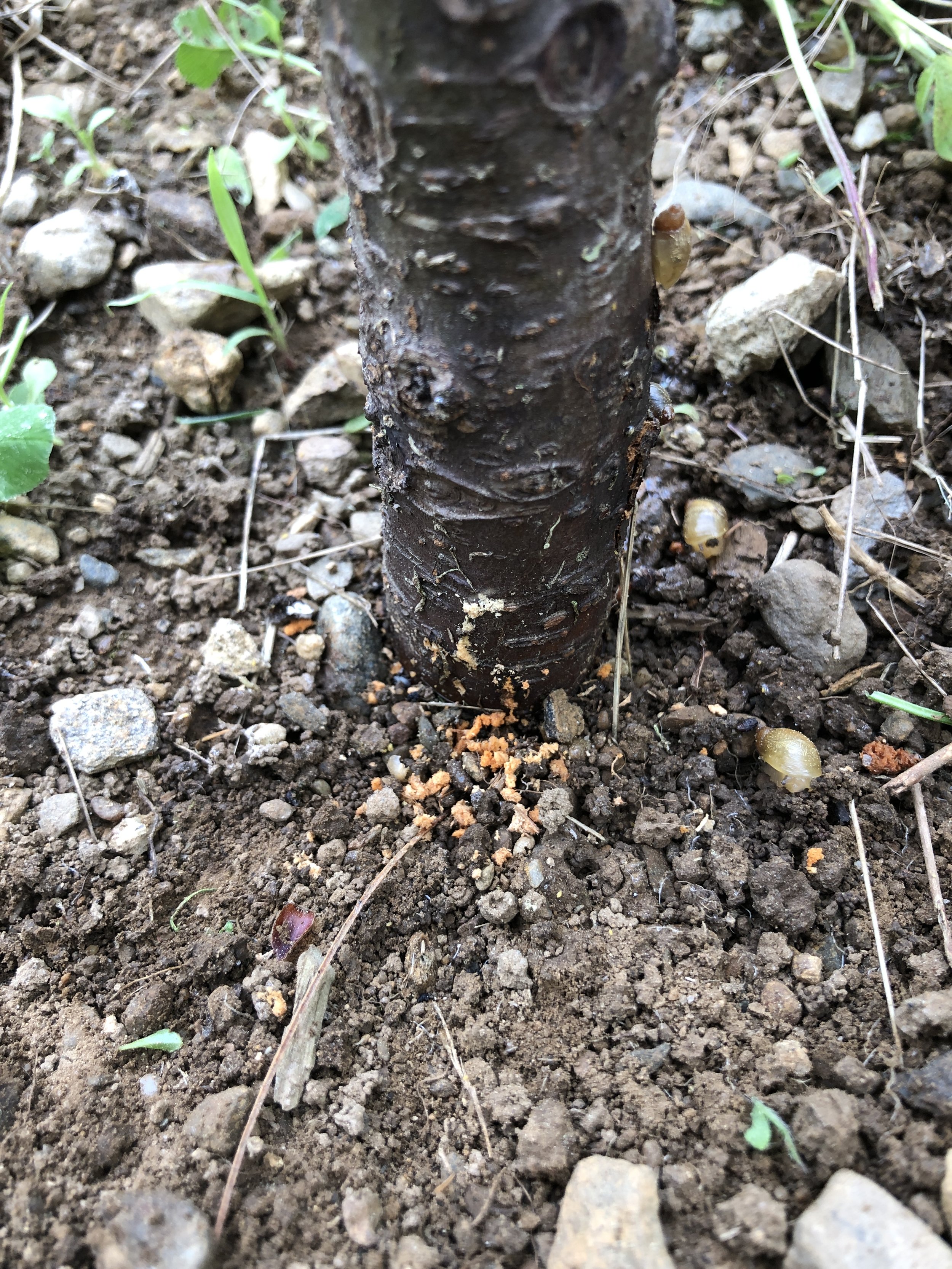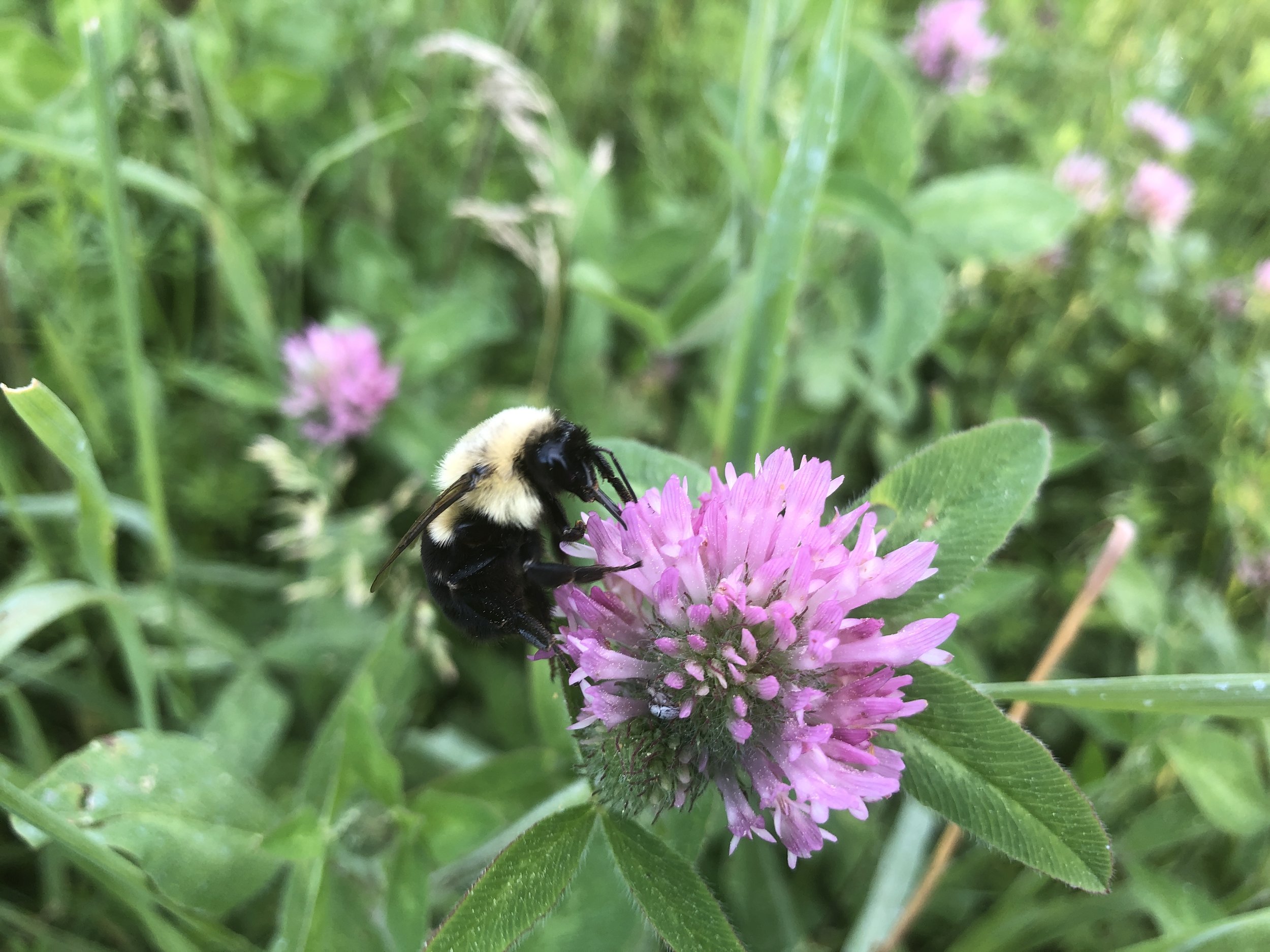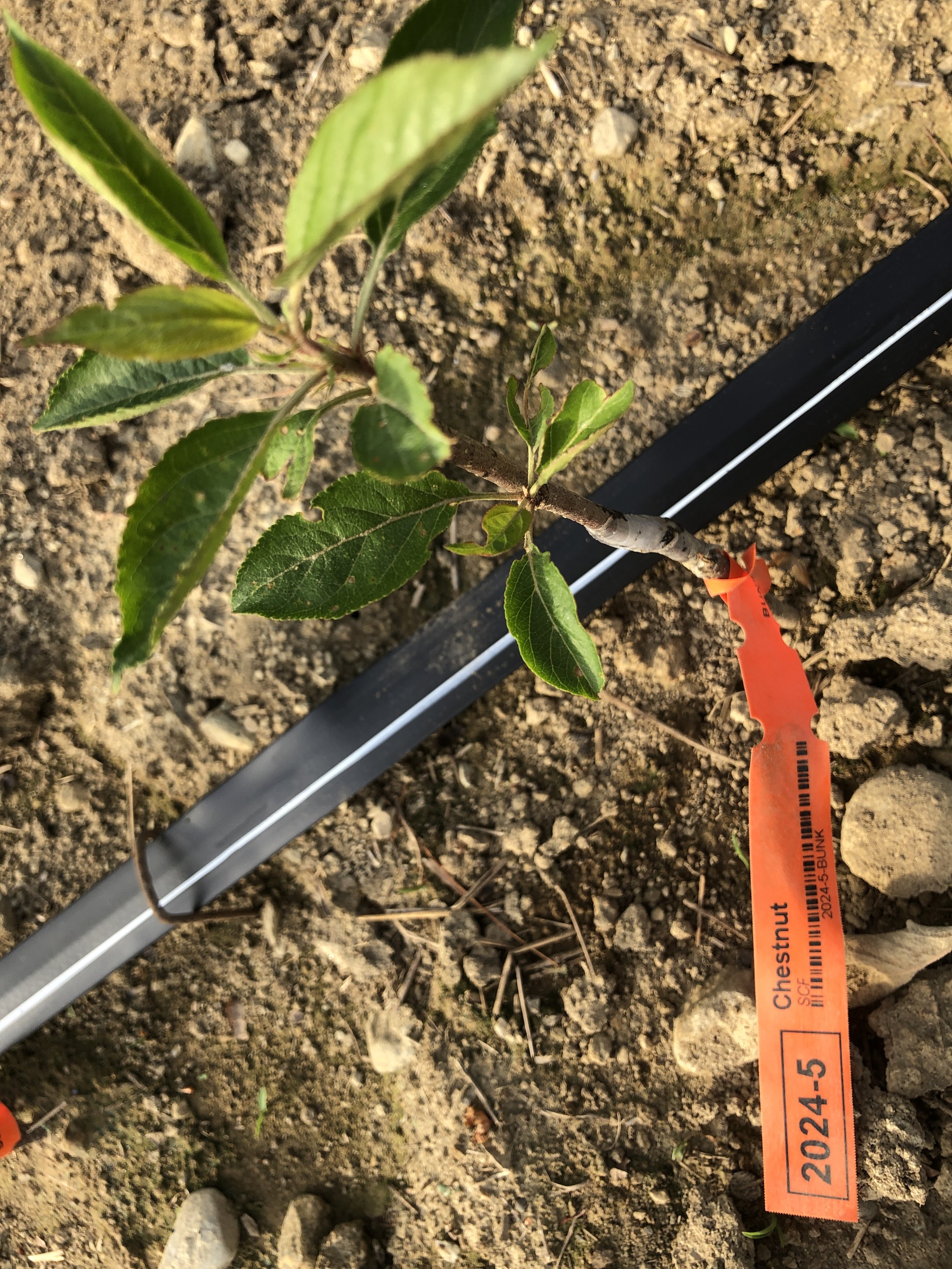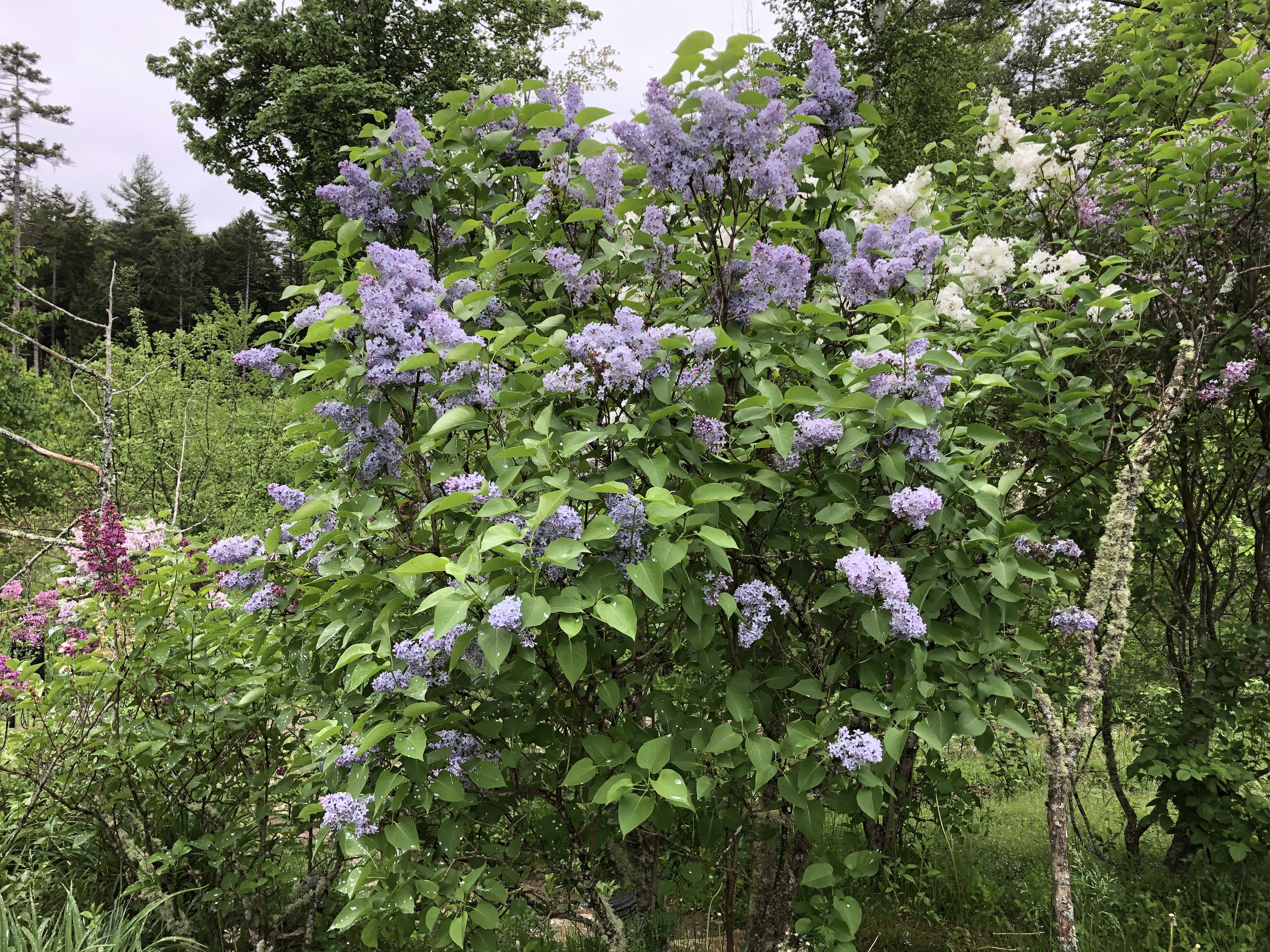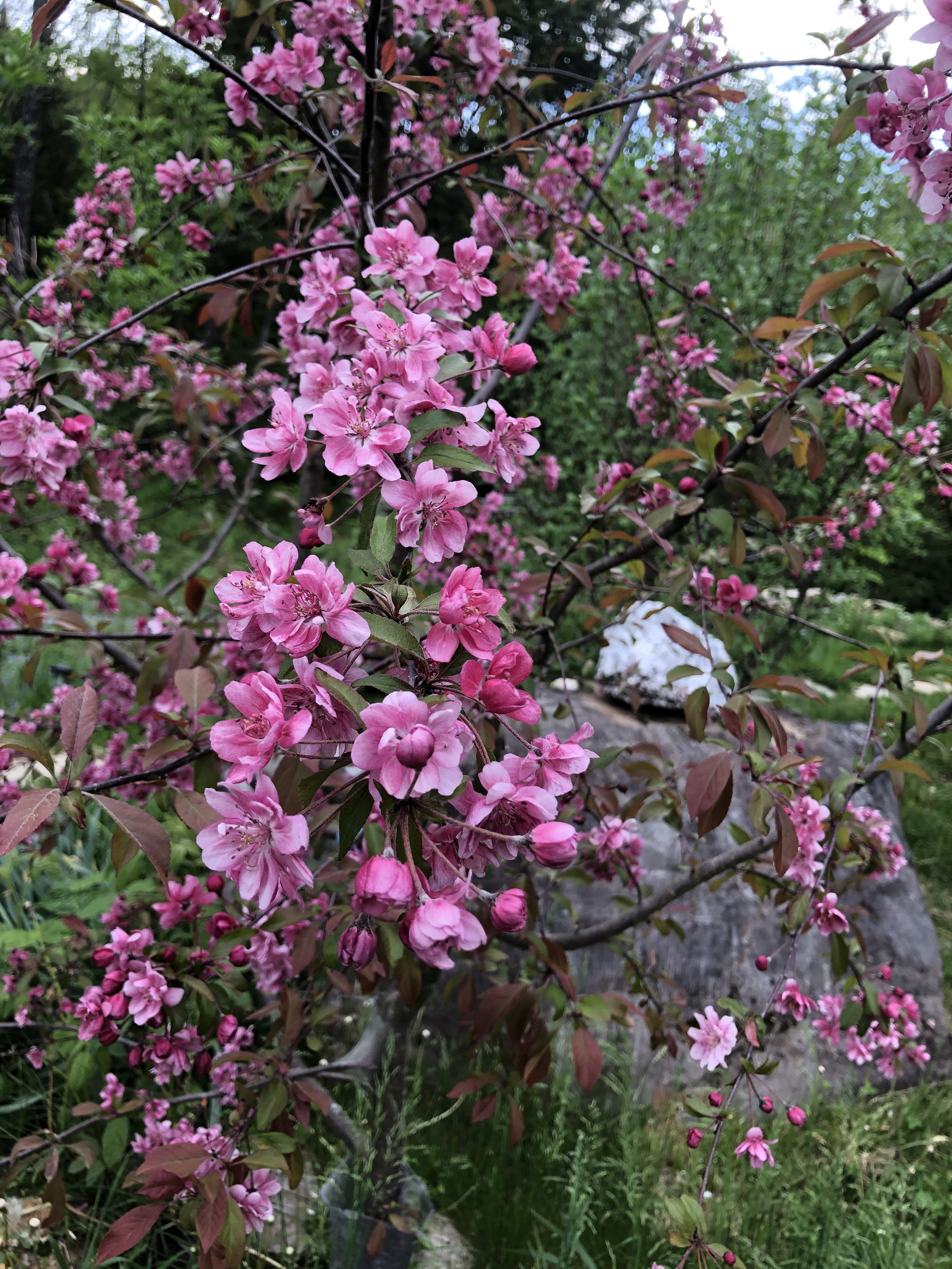TODAY IN THE ORCHARD
Laura laying down landscape fabric in the Finley Lane Nursery.
Laura came to the farm to help with scything, weeding and setting out “red ball traps”. Red Balls are fake plastic apples that we smear a gooey substance on called “Tanglefoot.” The apple maggot flies are attracted to the red apple-like spheres and get caught up in the sticky Tanglefoot when they land on them. This makes them easy to count. Once we get a certain number of catches, we know it’s time to spray. We also laid down black landscape fabric in between the rows of newly grafted trees. The landscape fabric smothers the emerging weeds and minimizes the need for more weeding. We all love that!
I also picked up an old cider press at a friend’s this morning. It’s in rough shape but could be valuable in the future for pressing small batches of cider. Cider season is not far away!

